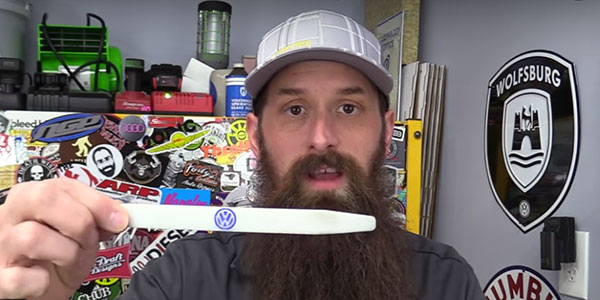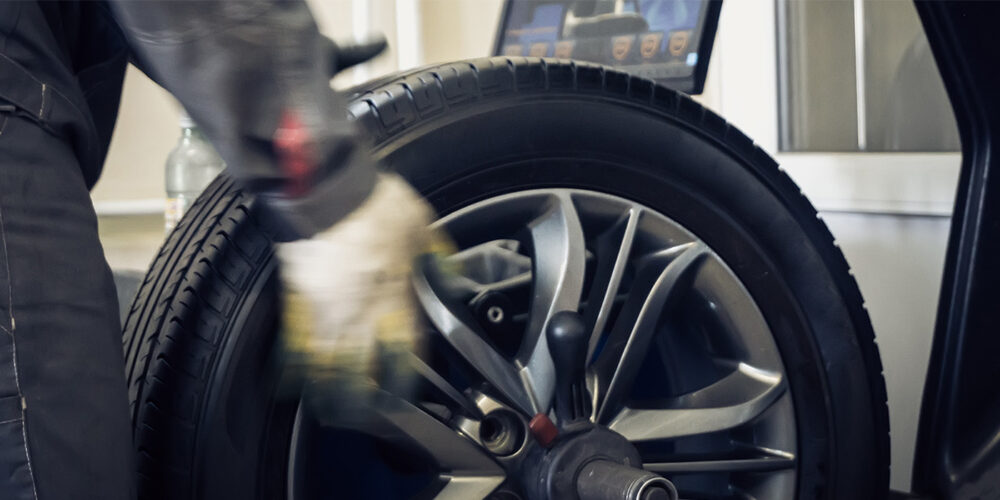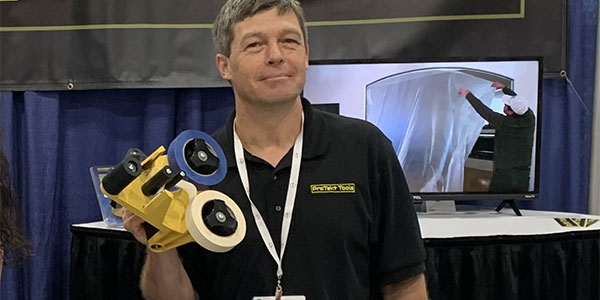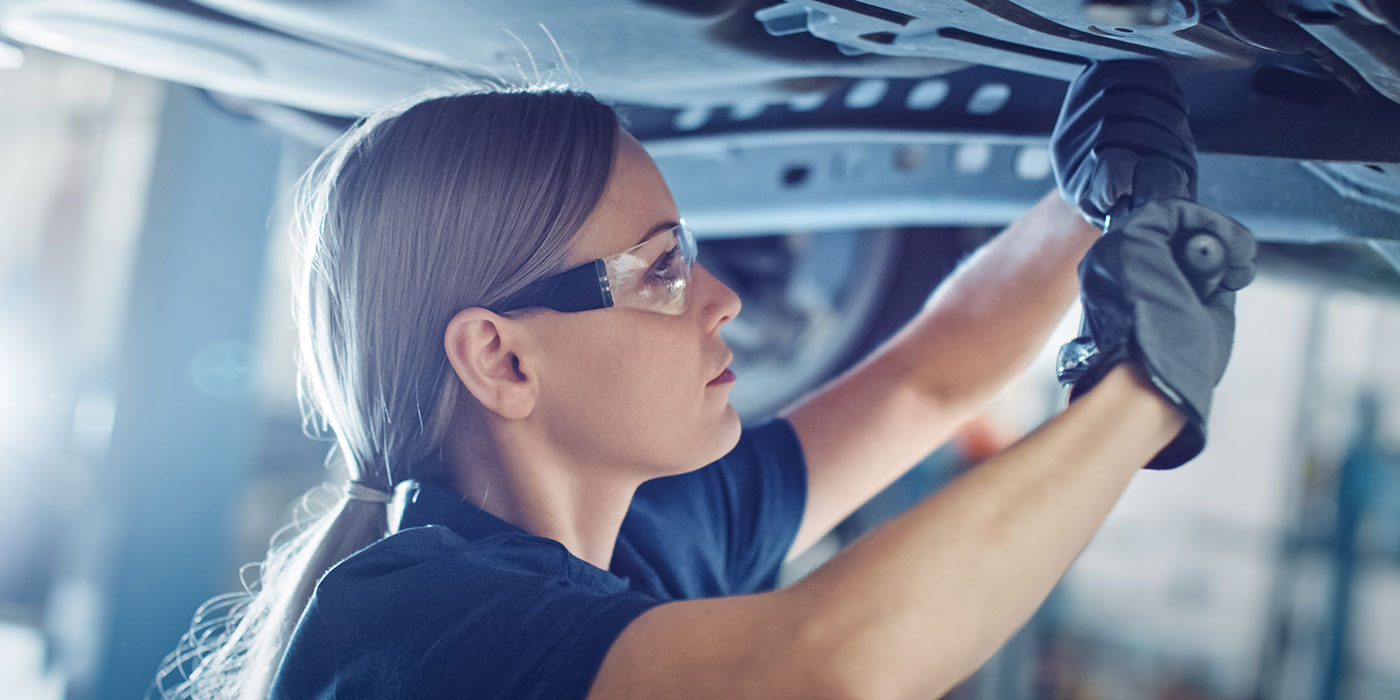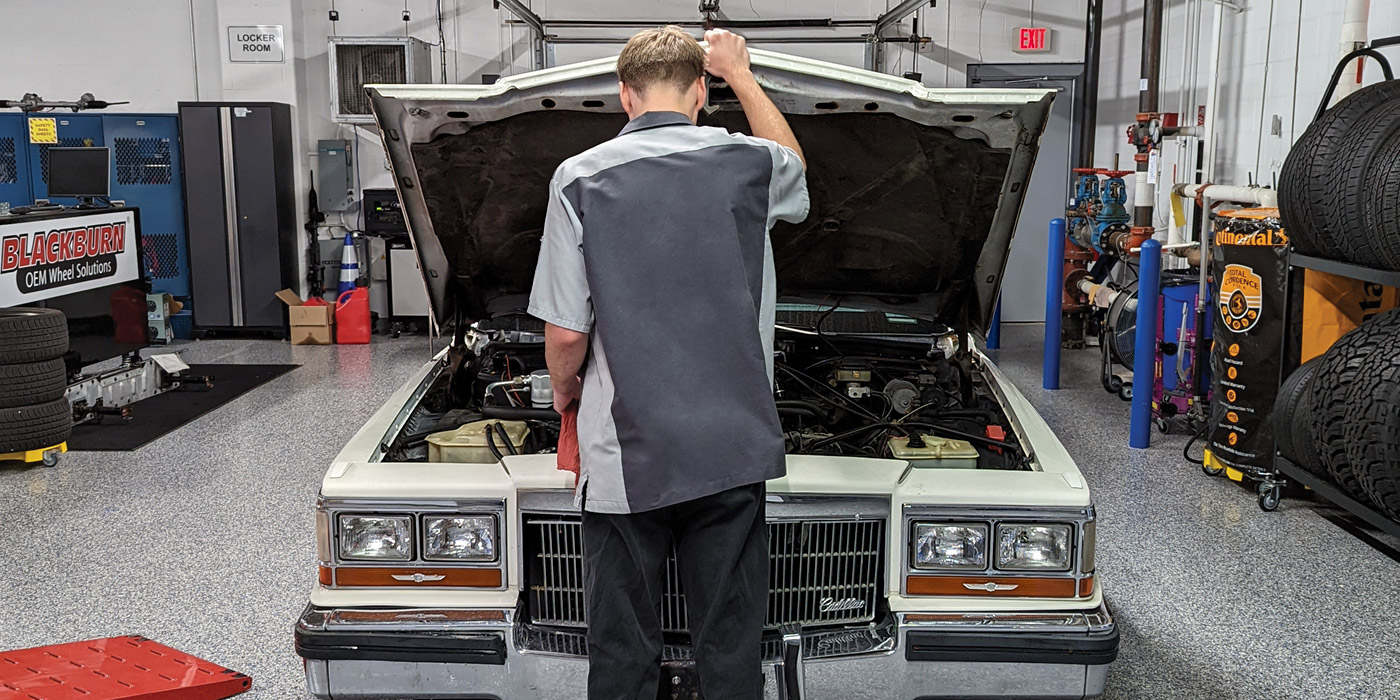This month we’re going to go over some of the must-have tools for working on VWs and Audis. I’ve spent my career as a Volkswagen technician and in that time I have fine-tuned exactly the tools that I need in order to fix or maintain VWs, and tool wise, much of the VW world applies to the Audi world as well.
There are a number of standard things you need for working on Volkswagens and Audis. This is whether you are a DYI-er, a shop or a professional technician who wants to take on the challenge of working on German cars. Some of the things we’re not going to talk about today are basic hand tools, ratchets, sockets, screwdrivers, that kind of stuff, because you’re going to need that for every car. We’re also not going to go super deep into the highly specialized tools, things like timing belt tools, lock tools and equipment like that, because not everyone is going to need that.
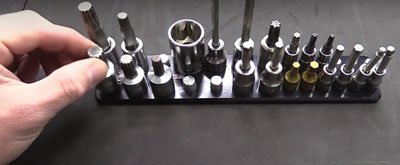
Now, going in no particular order, we’re going to start with triple squares. VW and Audi love their triple square bolts, so you’re going to need a handful of different style triple squares. Here (see Figure 1) I have some very shallow triple squares that are on 3/8” drive. I also have some that are a little bit longer on 3/8” drive as well. The most common sizes are 6, 8, 10 and 12, but you may actually find yourself needing 14s and even up to 18s.
Moving off of triple squares we’re going to need torx bits and drivers and we’re going to need them in a handful of different ways. The main ones that you’re going to be using are T20, T25, T30 and T45, which is a really common one for belly pans. In addition to having them as sockets, so you can put them on a ratchet, I also like to have them as separate bits. These work really well for maintenance. You can drop them in your 1/4” chuck impact and for these I have the long ones and the short ones. I actually use the short ones a lot more than the longer ones, but if you’re doing things like an intake manifold, these work amazing. It’s also not a bad idea to have an extremely short set of bits for those really tight spaces. On that note, I have a small bit driver. It’s extremely fine toothed and it works great for things like the IMRCs on the FSI engines. It’s also what I used to use all the time to do things like ABS modules and the motors for the HVAC system on B5 Passats.
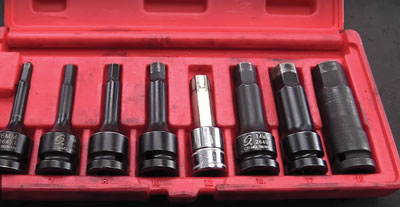
We’re also going to need a variety of ways to take off Allen head bolts. The most common are going to be 5mm and 6mm. I’ve got some stubby ones, mid length, ball end, standard length, 1/4” and 3/8” drive and of course the extremely long ball end. It’s also not a bad idea to have shorter ones than these 1/4” drives here, again because so much of the area that we work in is incredibly tight. You’ll also need 4, 7, 8 and 10, which are also used. In addition to these smaller Allens, you probably want to look at a set of bigger ones, which will allow you to do axle bolts and transmission services and things like that. You might want to buy an entire set. The most worn ones in my kit are the 12, 14 and 17 (see Figure 2).
Something that’s not super common but you are going to need are inverted torx sockets. These are just the reverse of the torx bits, and more like a traditional socket. There are a handful of window regulators that use these types of fasteners, and you will need to have these sockets in order to remove them.
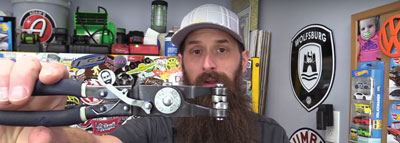
There are a couple of tools that I do think brand does matter, one of them being Blue-Point hose clamp pliers. Their dual cups grab the hose clamps much, much better than the ones that just have the U at the end. This has been my “go-to” set of hose clamp pliers for many, many years (see Figure 3). There are also a lot of people who like the cable-driven hose clamp pliers, and there are a lot of places where they work really great, but don’t cheap out on them, get a good pair.
You’re going to need a good set of wire strippers, and more importantly, you’re going to need some crimp tools. There is a special VW/Audi tool for crimping wires and they’re not that expensive. As you know, VW and Audi are known for wiring issues and hungry mice chewing on cabling, so I really recommend getting these tools. Since we’re going to be using either the heat-shrink-style connectors or heat-shrink over-connectors, you’re going to need a heat gun as well. I have a cool battery-powered one I wish I had had very early on in my career.
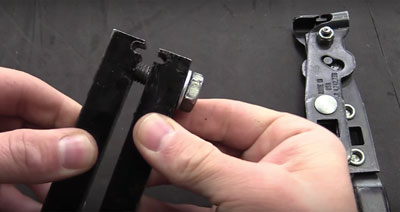
Axle boot failure used to be incredibly common so you had to have a good pair of clamp pliers that would crimp the clamp and lock it into place. For the small or soft clamps these work really well, but unfortunately, when we hit about the Mk5 generation, the clamp got quite a bit more heavy duty, and it was a real struggle to use these and get these done by hand. They have 1/2” drive openings where you can use a breaker bar for leverage, but I found that to be incredibly cumbersome and difficult. What I found was actually a heavy-duty set that you put on the clamp, then you use a drill, an impact or a ratchet and tighten the bolt, which does a much better job on the heavy-duty clamps (see Figure 4).
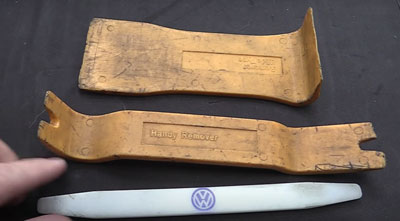
Next is a trim removal tool. The plastic and interior pieces on these cars have a very high strength and are really hard to get loose, sometimes impossible without breaking. Whether it’s like the one that we used to get at training or other ones where you have several different styles to fit the need of removing whatever trim you’re working on, the important thing is that you’re not using something like a screwdriver that can mar up the plastic. You can get these from almost any tool dealer, or from a VW dealership (see Figure 5).
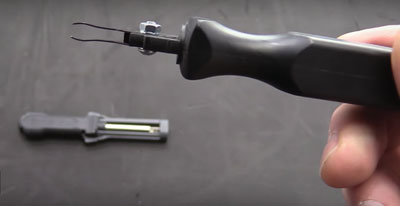
De-pinning tools are next on the list. Having a good set of de-pin tools is incredibly important so you don’t damage the wire or the connector. The ones that I use the most are actually OEM factory tools (see Figure 6). While I recommend these as the best ones, if you don’t want to spend the money there are a couple of options. The Ford pin tool works really good on the VW connectors or if you want a DIY solution, taking the metal insert out of an old wiper blade and grinding it down works great. You get a little bit of spring pressure with it and you can fine-tune it to the exact size for the connector you are trying to de-pin.
Now I mentioned we’re not going to talk a ton about hand tools, but there are several that you’re going to want to have. You’ll want a pair of ratcheting wrenches, of course. That’s vital, but the big key here — and this was a lot of doing rear brake jobs — is a ratcheting wrench for the 13 mm bolt at the end, and a 15 mm wrench to hold the pin for the caliper. This is important and the reason I’m bringing this up is because you need to have one that is kind of thin. It has to fit on the head of the caliper pins. If you don’t have one that’s thin enough, buy a cheap one, grind it down so that it does fit because you do have to counter hold that pin on the caliper in order to remove it.
I also have a specific 19mm wrench, which is really important. You need to have a good one with thin walls in order to get on the drain plugs for most of the cars that don’t have that composite pan. You may also want to have an 18mm with a pretty thin head for the VR6s as well. A couple of things you’re going to need for basic oil change maintenance are some big-boy sockets, 32mm typically covers most diesels and 36mm covers things like the VR6 and the FSI engine.
You’re also going to need an oil filter cup. There is one size that covers a lot of engines and a lot of oil filters. It’s a must have; it fits a 2.5, a TSI and a handful of other engines. One key feature is to get one that accepts a 3/8” drive extension, which will make it much more useful.
As we round home, of course you’re going to need a scan tool of some type. There are many different options, even some that work with your cell phone, but either way it is worth every penny to invest in VAG-COM software. It’ll make you a lot of money.
And finally, this is one, in looking back, something I should have started using from day one — a wheel holder. They screw in where a wheel bolt goes and support the wheel while you remove or install the rest of the wheel bolts. If you’re just getting started or if you’re a DYI-er especially, get a set of these. They work great and they make putting wheels on so much easier. It’s important to note there are multiple sizes. There is a 14 x 1.5 for pretty much everything Mk4 forward. There’s also a 12 x 1.5 that is more for the older cars in the VW world, and I think BMW uses the same thing. You’ll know right away if it doesn’t fit, it will either be too big or way too small, and there is really not a huge risk of cross threading or messing anything up.
So there you have it, these are the basics!
If you want to watch this video, click here. If you have questions or concerns, post them below the video or send Charles an email at [email protected].

